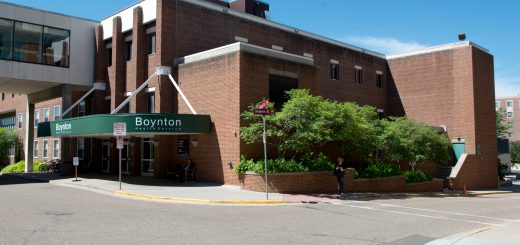Financial aid 101 for the nontraditional path
Rising college costs place special burdens on students who delay enrollment, work full time or support families.

By Ksenia Gorinshteyn
Nontraditional students often come into college with special circumstances — children to support, jobs to balance or the reality of paying for college themselves.
These days, they need all the support they can get.
The cost of attending college has gone up significantly in the past decade. Between 2006 and 2017, the price of undergraduate tuition and other costs associated with college rose 31%, according to a National Center for Education Statistics report. Meanwhile, wages have remained relatively stagnant.
As a result, trying to work one’s way through college is nearly impossible. According to a report by the Georgetown University Center on Education and the Workforce in 2018, almost 70% of all college students work a job but with wages that are “lower in real terms than those of previous generations.”
“I do think if I didn’t have to work so much, I would definitely do better in classes,” said Cassidy Drummond, a senior at the University of Minnesota who works around 30 hours a week via five jobs. She is financially independent from her family, so the burden of college falls entirely on her.
Drummond, a double major in political science and economics with minors in philosophy and global studies, takes over 20 credit hours a semester to ensure that she graduates in four years. She said she can’t afford another year of student loans added to her existing ones. “Sometimes I have to miss study groups and things like that because I just can’t get off of work. I just don’t have as much time to study.”
For nontraditional students — those who delay graduation, work full time (or nearly full time) to cover their costs or who have family obligations to balance with the costs of college — here are some guidelines for how to navigate the financial burden of higher education at the University of Minnesota.
Federal financial aid
Loans help in the short-term, but student workers often express how inconvenient it becomes once they’re graduated and are severely in debt.
“I work at least three jobs in the summer just so that I’m able to minimize how many loans I have to take out [for school],” Drummond said. “My entire tuition is covered in federal loans, which, yes, it’s better than private loans, but it’s still an issue around the amount of debt which I’m in.”
Drummond currently has $71,000 of debt incurred because of school —nearly three times the average debt carried by a Twin Cities undergraduate upon graduation. Of students who graduated with debt in the 2017-2018 school year, they averaged $25,573 in student loan debt, not including any PLUS parent loans, according to the Office of Undergraduate Education.
Drummond plans to work multiple jobs and pay the monthly amount, or more if she can, once her loans are due. She estimates that it will take her more than 10 years to pay everything back.
Some students can get grants from federal or state aid, which they don’t have to pay back in dollars but sometimes in service. These include Pell Grants, veteran and ROTC benefits, as well as waivers for blind and deaf students. These types of aid are listed on OneStop’s website, along with application forms that should be submitted to OneStop either in-person or over email.
Pell Grants were awarded to about 23% of University students on all five campuses in 2017 with the average award at $3,975. Nationally, though, 32% of college students receive Pell Grants. The grant is awarded based on household income: lower incomes receive more aid, with the maximum being $6,195 for the 2019-2020 school year.
Discussing these options and waivers with an adviser might yield the best results, as they might need additional information to better suit certain situations.
University financial aid
The University offers scholarships too. One of the University’s most popular is the U Promise scholarship. All incoming Minnesota resident students whose family makes $120,000 or less are guaranteed a scholarship ranging from $300 to $4,000.
But the U Promise scholarship is limited, especially for nontraditional students.
The scholarship is awarded for four consecutive years to first-time, degree-seeking students taking at least 13 credits in a baccalaureate program. Transfer students get the scholarship for only two consecutive years.
The scholarship also does not apply to part-time students and is only available during fall and spring semesters, so it can’t be applied to any summer classes you might plan on taking.
Special circumstances
Sometimes circumstances arise that make it too difficult to pay the tuition. If that happens, students can file a Special Circumstances Appeal, where a student may provide documentation that financial situations have changed drastically since the last FAFSA on file. This typically results in an increase of offered loans rather than grant or scholarship money.
Mike Arieta, a financial aid counselor in the University’s student finance office, said they try to work with students who need to cover the cost of college by working. A challenging aspect of that can be students not wanting to take out loans. For some students, he said, “that may not be
an option.”
“You may have to take some loans out to cover additional costs because the grants are only there to help, not to pay all of your tuition and fees,” Arieta said. “With special circumstances, they’re not always going to get what they want. If we can move things around in the budget, we will. But otherwise a different type of loan is going to be the answer.”



